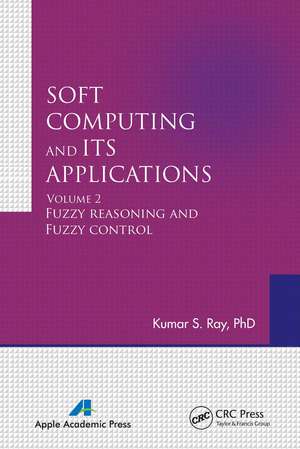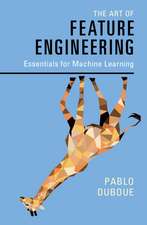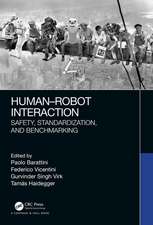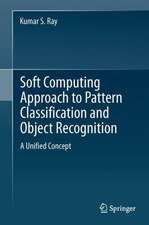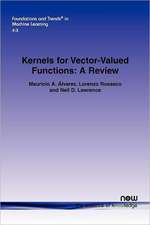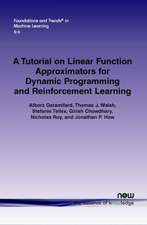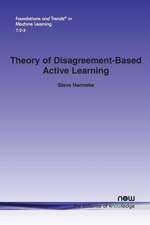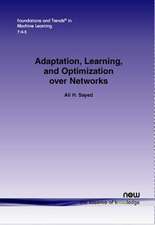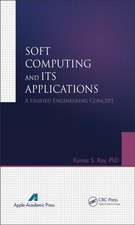Soft Computing and Its Applications, Volume Two: Fuzzy Reasoning and Fuzzy Control
Autor Kumar S. Rayen Limba Engleză Paperback – 31 mar 2021
The tool soft computing can be a landmark paradigm of computation with cognition that directly or indirectly tries to replicate the rationality of human beings. The book explains several advanced features of soft computing, such as cognitive maps, complex valued fuzzy sets and fuzzy logic, quantum fuzzy sets and quantum fuzzy logic, and rough sets and hybrid methods that combine neural net fuzzy logic and genetic algorithms. The book contains several real-life applications to present the utility and potential of soft computing.
The book:
• Discusses the present state of art of soft computing
• Includes the existing application areas of soft computing
• Presents original research contributions
• Discusses the future scope of work in soft computing
The book is unique in that it bridges the gap between theory and practice, and it presents several experimental results on synthetic data and real-life data. The book provides a unified platform for applied scientists and engineers in different fields and industries for the application of soft computing tools in many diverse domains of engineering. This book can be used as a textbook and/or reference book by undergraduate and postgraduate students of many different engineering branches, such as electrical engineering, control engineering, electronics and communication engineering, computer sciences, and information sciences.
| Toate formatele și edițiile | Preț | Express |
|---|---|---|
| Paperback (1) | 579.62 lei 6-8 săpt. | |
| Apple Academic Press Inc. – 31 mar 2021 | 579.62 lei 6-8 săpt. | |
| Hardback (1) | 908.68 lei 6-8 săpt. | |
| Apple Academic Press Inc. – 7 oct 2014 | 908.68 lei 6-8 săpt. |
Preț: 579.62 lei
Preț vechi: 681.91 lei
-15% Nou
Puncte Express: 869
Preț estimativ în valută:
110.91€ • 116.04$ • 92.13£
110.91€ • 116.04$ • 92.13£
Carte tipărită la comandă
Livrare economică 02-16 aprilie
Preluare comenzi: 021 569.72.76
Specificații
ISBN-13: 9781774630877
ISBN-10: 1774630877
Pagini: 468
Ilustrații: 169
Dimensiuni: 156 x 234 mm
Greutate: 0.45 kg
Ediția:1
Editura: Apple Academic Press Inc.
Colecția Apple Academic Press
ISBN-10: 1774630877
Pagini: 468
Ilustrații: 169
Dimensiuni: 156 x 234 mm
Greutate: 0.45 kg
Ediția:1
Editura: Apple Academic Press Inc.
Colecția Apple Academic Press
Public țintă
Academic and PostgraduateCuprins
Fuzzy Reasoning. Fuzzy Reasoning Based on Concept of Similarity. Fuzzy Control. Concluding Remarks. Index.
Notă biografică
Kumar S. Ray, PhD, is a professor in the Electronics and Communication Science Unit at the Indian Statistical Institute, Kolkata, India. He has written a number of articles published in international journals and has presented at several professional meetings. His current research interests include artificial intelligence, computer vision, commonsense reasoning, soft computing, non-monotonic deductive database systems, and DNA computing.
Recenzii
"This two-volume textbook set is a quite elementary, but rather comprehensive, introduction to the field of soft computing, accessible not only for undergraduates in mathematics, but also for students in computer science and engineering. The presentation is essentially correct, offers figures for most of the notions it defines, and presents lots of detailed numerical examples. Volume 1 starts with an explanation of the notion of soft computing and continues with chapters on fuzzy sets, fuzzy operators, fuzzy relations, fuzzy logic, fuzzy implications, fuzzy if-then models, and rough sets. Volume 2 covers in separate chapters the topics of fuzzy reasoning, fuzzy reasoning based on the concept of similarity, and fuzzy control."
—Siegfried J. Gottwald, writing in Zentralblatt MATH, 1308
—Siegfried J. Gottwald, writing in Zentralblatt MATH, 1308
Descriere
This book will be highly useful to researchers in the area of pattern classification and computer vision as well as for academics and professionals. Combining theory and practice, the book presents several experimental results, all synthetic and real data, are provided on a unified platform for pattern classification and object recognition.
